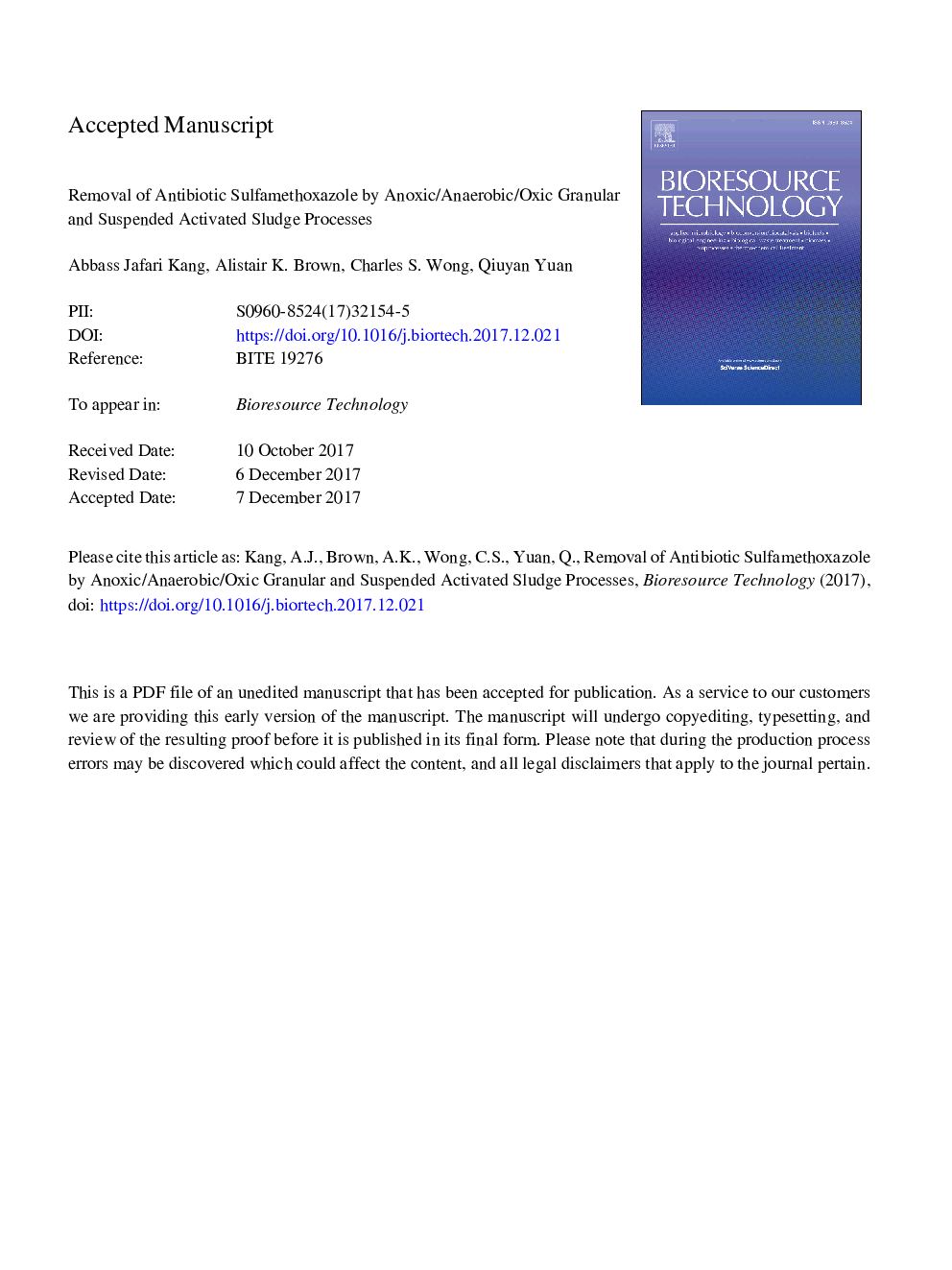| Article ID | Journal | Published Year | Pages | File Type |
|---|---|---|---|---|
| 7068468 | Bioresource Technology | 2018 | 32 Pages |
Abstract
This study investigates the removal of the antibiotic sulfamethoxazole (SMX) in two sets of anoxic/anaerobic/oxic sequencing batch reactors inoculated with either suspended or granular activated sludge. Continuously, for three months, 2â¯Î¼g/L SMX was spiked into the reactor feeds in a synthetic municipal wastewater with COD, total nitrogen (TN) and total phosphorous (TP) of 400, 43 and 7â¯mg/L, respectively. The presence of SMX had no significant impact on treatment performance of the suspended and granular biomass. After 12â¯h of hydraulic retention time, SMX removal efficiencies of 84 and 73% were obtained for the granular and suspended biomass, respectively. Mixing without aeration did not remove SMX, confirming the insignificance of SMX removal via sorption. The pseudo-first order SMX removal rate constants in the granular and suspended biomass were 2.25â¯Â±â¯0.30 and 1.34â¯Â±â¯0.39â¯L/gVSS·d, respectively. The results suggest that granules with advantages such as elevated biomass retention and greater biomass concentration could be effective for the removal of this class of antibiotics.
Related Topics
Physical Sciences and Engineering
Chemical Engineering
Process Chemistry and Technology
Authors
Abbass Jafari Kang, Alistair K. Brown, Charles S. Wong, Qiuyan Yuan,
